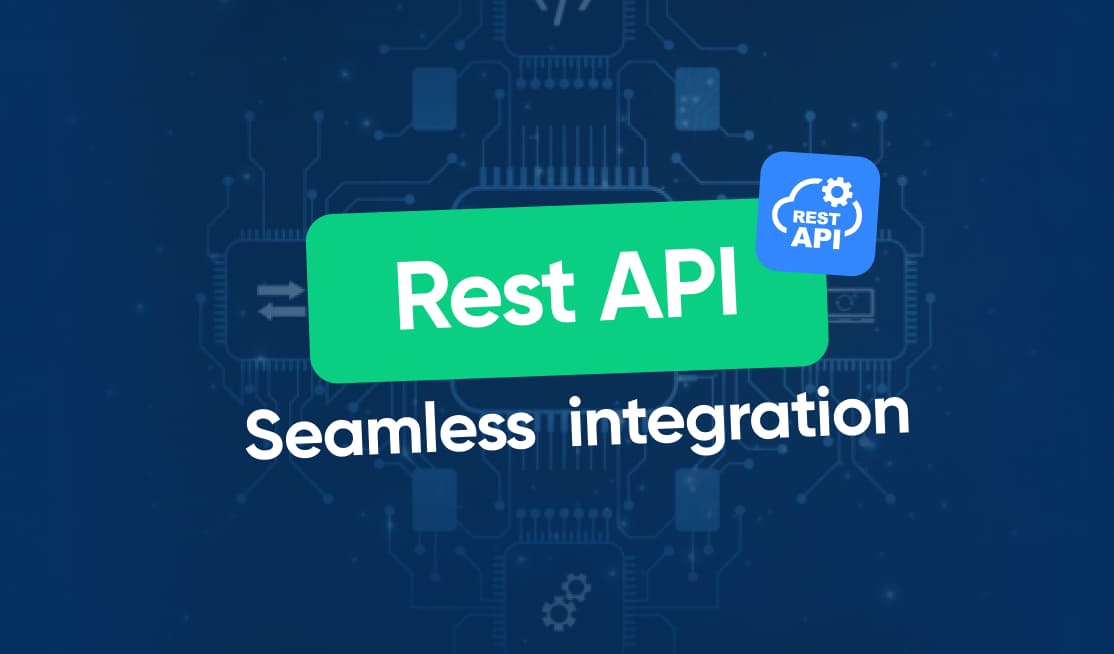
Rest APIs have become an essential component of modern web application development. They allow applications to communicate with each other and exchange data seamlessly. In this article, we will delve into the world of Rest APIs, exploring their fundamental concepts, benefits, implementation steps, best practices, and troubleshooting techniques.
Understanding the Basics of Rest APIs
What is a Rest API?
Rest API, short for Representational State Transfer Application Programming Interface, is an architectural style commonly used in web development. It enables two or more software applications to communicate and exchange data over the internet. Unlike SOAP-based APIs, which use XML for data exchange, Rest APIs employ lightweight data formats like JSON or XML to transmit data between client and server.
Key Principles of Rest APIs
Rest APIs are built on a few key principles that set them apart from other API styles:
- Statelessness: Rest APIs are stateless, meaning that each request from the client to the server must contain all the information necessary to understand and process the request. The server does not store any session state about the client.
- Uniform Interface: Rest APIs have a uniform interface that standardizes the way clients and servers communicate. It consists of several HTTP methods, including GET, POST, PUT, and DELETE, to perform operations on resources.
- Resource-Oriented: Rest APIs treat data as resources and expose them through unique URLs (Uniform Resource Locators). These resources can be accessed and manipulated using the HTTP methods.
- Representation: Rest APIs use multiple representations, such as JSON or XML, to represent the data exchanged between client and server. Clients can request specific representations, and servers can respond with the appropriate format.
Statelessness is a fundamental aspect of Rest APIs. By not storing any session state about the client, Rest APIs ensure that each request is independent and self-contained. This allows for better scalability and flexibility, as servers can handle requests from multiple clients without having to maintain any client-specific information.
The uniform interface of Rest APIs simplifies the communication between clients and servers. With standardized HTTP methods, developers can easily understand and implement the necessary operations on resources. For example, the GET method is used to retrieve a resource, while the POST method is used to create a new resource. This consistency in interface design promotes interoperability and makes it easier for developers to work with Rest APIs.
Resource-oriented design is another key principle of Rest APIs. By treating data as resources, Rest APIs provide a structured and organized way to access and manipulate data. Each resource is uniquely identified by a URL, making it easy for clients to locate and interact with specific resources. This resource-oriented approach promotes modularity and separation of concerns, allowing for better maintainability and scalability of the API.
Finally, the use of multiple representations in Rest APIs allows for flexibility in data exchange. Clients can request data in a specific format, such as JSON or XML, based on their preferences or requirements. Servers can then respond with the requested representation, ensuring compatibility and ease of integration between different systems. This flexibility in representation helps to accommodate the diverse needs of clients and promotes interoperability in the API ecosystem.
Importance of Rest APIs in Web Applications
Enhancing Application Functionality
Rest APIs play a crucial role in enhancing the functionality of web applications. They enable developers to provide access to application features and data through APIs, allowing other developers and external services to leverage and integrate with the application seamlessly. This extensibility fosters innovation, enabling the development of complementary services and integrations.
Moreover, Rest APIs empower developers to create dynamic and interactive user experiences by fetching real-time data from servers without the need to reload the entire web page. This asynchronous data retrieval enhances the user experience by providing up-to-date information and reducing loading times, ultimately leading to a more responsive application.
Facilitating Integration and Communication
Rest APIs facilitate seamless integration and communication between different software systems. They enable applications to interact with each other, exchange data, and perform operations across platforms. Whether it is integrating third-party services, synchronizing data between applications, or building microservices architectures, Rest APIs provide a standardized and efficient way to establish communication channels.
Furthermore, Rest APIs promote interoperability by allowing diverse systems to work together cohesively. By adhering to RESTful principles such as statelessness and uniform interfaces, developers can ensure that different applications can communicate effectively, regardless of their underlying technologies. This interoperability is essential in today’s interconnected digital landscape, where applications often rely on multiple services to deliver comprehensive solutions.
Steps to Implement Rest APIs
Designing the API
Designing a Rest API starts with identifying the resources that the API will expose. It involves determining the endpoints, defining the data model, and establishing the relationships between resources. A well-designed API follows the principles of REST, ensuring simplicity, discoverability, and consistency.
When designing the API, it is crucial to consider factors such as scalability, security, and versioning. Scalability ensures that the API can handle increased loads as the application grows, while security measures protect the API from unauthorized access and potential attacks. Versioning allows for the evolution of the API without breaking existing client implementations, enabling smooth transitions to new features and improvements.
Building the API
Once the API is designed, the next step is to build it. This involves implementing the endpoints, handling HTTP methods, and defining the logic for data manipulation and retrieval. Depending on the programming language and framework being used, there are various libraries and tools available to simplify API development.
During the development phase, it is essential to consider factors such as performance optimization, error handling, and documentation. Performance optimization ensures that the API responds quickly to client requests, providing a seamless user experience. Effective error handling mechanisms help in identifying and resolving issues promptly, improving the overall reliability of the API. Comprehensive documentation is also vital for developers who will be integrating with the API, providing clear instructions on how to use the endpoints and what to expect in return.
Testing the API
Testing is a critical phase in Rest API implementation. It involves verifying the correctness of the API’s behavior, handling of edge cases, and adherence to the API’s specifications. Automated testing frameworks, such as Postman or Newman, can be utilized to automate the testing process and ensure the API operates as expected.
In addition to functional testing, it is essential to perform security testing to identify and address vulnerabilities that could compromise the API. Security testing includes techniques such as penetration testing, input validation checks, and authorization verification to ensure that the API is robust and secure against potential threats.
Best Practices for Implementing Rest APIs
Ensuring Security
Security is of paramount importance when implementing Rest APIs. It is crucial to authenticate and authorize requests, protect sensitive data, and prevent unauthorized access. Implementing industry-standard security mechanisms, such as OAuth 2.0 or JWT (JSON Web Tokens), can help secure Rest APIs.
Furthermore, implementing secure coding practices, such as input validation, output encoding, and proper error handling, can help mitigate common security vulnerabilities like injection attacks and cross-site scripting (XSS). Regular security audits and penetration testing can also help identify and address potential security risks proactively.
Managing API Versioning
As Rest APIs evolve, managing versioning becomes crucial to ensure backward compatibility while introducing new features. Utilizing versioning techniques, such as URL versioning or request header versioning, allows clients and servers to communicate effectively while accommodating changes over time.
In addition to versioning, documenting API changes and providing clear communication to API consumers can help minimize disruptions during version upgrades. Implementing a deprecation strategy for outdated versions and providing migration guides can ease the transition for users relying on older API versions.
Optimizing Performance
To deliver a responsive and efficient Rest API, optimizing performance is crucial. Techniques such as caching, request compression, and implementing pagination for large datasets can significantly improve API performance. Monitoring and profiling the API’s performance can provide insights into bottlenecks and areas for improvement.
Furthermore, considering factors like network latency, payload size, and client-side processing can help fine-tune the API for optimal performance across different environments and usage scenarios. Load testing the API under various conditions can also help identify performance limits and scalability issues before deployment to production.
Troubleshooting Common Issues with Rest APIs
Dealing with API Errors
Resolving errors encountered while using Rest APIs requires a structured approach. Proper error handling, including informative error messages and appropriate HTTP status codes, helps clients understand and react to issues. Detailed logging and monitoring can aid in identifying and resolving recurring errors.
When dealing with API errors, it is crucial to distinguish between client-side errors, such as invalid input or authentication failures, and server-side errors, which may result from issues on the server, like database connection problems or internal server errors. By categorizing errors and providing specific error codes, developers can streamline the troubleshooting process and enhance the overall user experience.
Overcoming Performance Issues
Performance issues in Rest APIs can arise due to various factors, including inefficient database queries, network latency, or poorly designed API endpoints. Profiling and analyzing performance bottlenecks, optimizing database queries, implementing caching mechanisms, and utilizing load testing tools can address and mitigate performance challenges.
Furthermore, monitoring and scaling resources based on usage patterns can help prevent performance degradation during peak traffic periods. Implementing content delivery networks (CDNs) to reduce latency, employing asynchronous processing for time-consuming tasks, and leveraging microservices architecture for scalability are additional strategies to enhance the performance of Rest APIs.
Implementing Rest APIs for web applications holds immense value, providing a standardized and efficient way to communicate and exchange data. By following best practices, troubleshooting common issues, and staying up-to-date with industry trends, developers can ensure the successful implementation and integration of Rest APIs in any web application.


